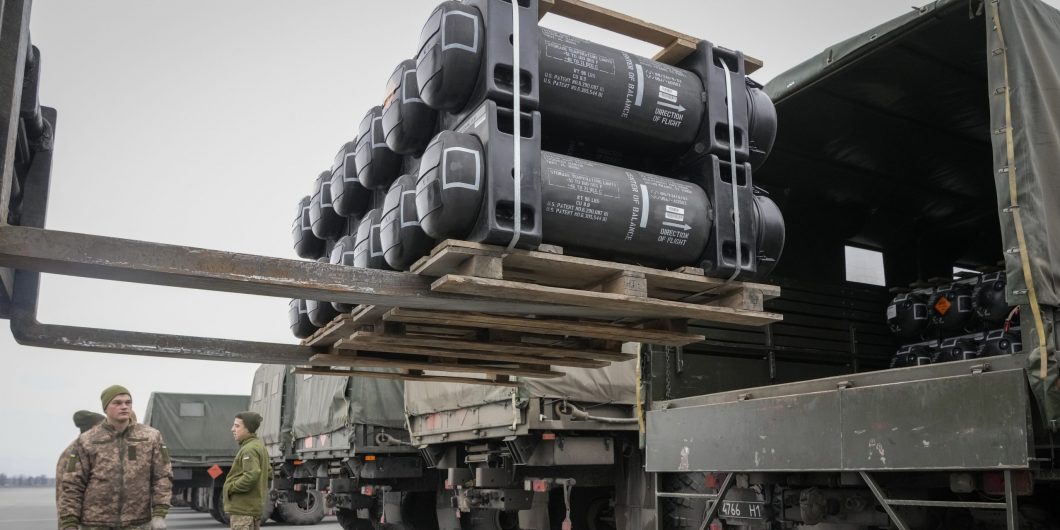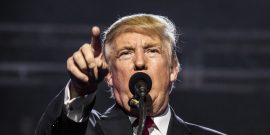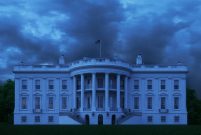NATO’s Renewed Relevance
NATO—arguably history’s most enduring and successful military alliance for preserving peace in Europe—is now facing the most daunting challenge in its seventy-three-year history. Russia’s unprovoked invasion of Ukraine has forced NATO to adopt a war-time readiness posture, redeploy its forces, and face the imminent threat of escalation of hostilities, a wider conflict across Europe, and possible nuclear war.
The alliance is one of mutual defense and assistance that has grown from its initial twelve members in 1949 to thirty nations today. With the disintegration of the Soviet Union in 1991, former Soviet Bloc nations in the Baltics and Eastern Europe sought to secure their newfound independence by signing the North Atlantic Treaty and gathering under NATO’s security umbrella. Under Article 5 of the treaty, an attack on one member is regarded as an attack on all and so makes allies of thirty nations—a powerful deterrent to Russian aggression.
The alliance, however, is now confronted by Russian aggression against a non-NATO nation and the very real possibility of a wider war in Europe. Russia’s invasion of Ukraine threatens to engulf bordering NATO nations. To date, U.S. and NATO officials have resisted mounting a “no-fly zone” over Ukraine. Such a zone would escalate the conflict and require committing NATO aircraft for combat air patrols, refueling, and surveillance and risk those aircraft and crews to Russian fighters and anti-aircraft fire. A rigorously maintained no-fly zone could also require deployment to Ukraine of the U.S.’s advanced Patriot regional air and missile defense system. With a no-fly zone in place, NATO aircraft would be unlikely to operate from cross-border safe havens immune to Russian attack. Russian aircraft currently launching stand-off munitions would have to be attacked in Russian airspace. A dizzying spiral of escalation would inevitably lead to a broader air-land battle.
The western military supply to beleaguered Ukraine also passes through bordering NATO nations, most notably along the long western border with Poland. NATO nations Hungary, Romania, and Slovakia also share a border with Ukraine and may well become future sources of supply. Fierce Ukrainian resistance has hobbled the Russian advance, but that resistance is reliant on open supply lines not only for light infantry weapons and ammunition, but for drones, missiles, and rockets for attacks on Russian aircraft and armor. There are also reports that as many as 15,000 volunteers with military experience came across the border to join the newly formed International Legion for the Territorial Defense of Ukraine. Frustrated in its ambition to see Kiev capitulate and faced with mounting casualties, Moscow will now attack to choke-off Ukraine’s military logistics lifelines at their crossing points with bordering NATO nations. An errant cross-border attack immediately draws NATO nations into the conflict.
Moscow has been hit with crippling economic sanctions and may soon seek to retaliate. Cyberattacks have the global reach to target not just banking and financial networks: power-grids, telecommunications, infrastructure, air traffic control, e-commerce, and social media are at risk. Numerous cyberattacks have already been launched by Russia against Ukraine. If Russia were to launch effective cyberattacks on the United States it could trigger counterattacks not just by U.S. cyber forces, but even by conventional U.S. forces and those of other NATO members. U.S. warfighting doctrine is wholly unsettled on the nature of a proportional response to cyberattack, but a cyberattack resulting in American casualties would justify strikes by cyber or conventional forces.
Russian occupation of Ukraine, and the installation of a puppet government to act at the behest of Moscow, would create an eastern bloc of nations aligned against NATO and the West.
Russian forces engaged in the invasion of Ukraine vastly outnumber the stoic defenders. But Russian progress has been made in fits and starts with uneven leadership and poorly performing troops. In the face of a stuttering advance by their enemy, Ukrainian forces will continue to use time to their advantage. The weight of Russian armor, artillery, and troop strength, however, is still likely to prevail as field commanders adapt to the situation on the ground and unsnarl supporting logistics. NATO nations will use the time bought by Ukraine’s defenses to continue to supply Kiev with both armaments and a steady stream of tactical and operational intelligence. As Russian forces continue to advance, their extended supply lines will become more vulnerable to hit-and-run attacks by small units. Given the heroic and steadfast resistance of the Ukrainians, Russian-occupied areas of the country will likely become hotbeds of insurgent attacks.
Russian occupation of Ukraine, and the installation of a puppet government to act at the behest of Moscow, would create an eastern bloc of nations aligned against NATO and the West. Moldova has already been drawn into Moscow’s orbit and the staging of Russian forces in Belarus has neatly accomplished the military occupation of that country. NATO now faces the grim reality of an armed military frontier with the line drawn from the Baltic states of Estonia, Latvia, and Lithuania to the Black Sea and the borders of Greece and Turkey—all members of NATO. The Russian invasion of Ukraine may well be the start of a Second Cold War.
The First Cold War ended with the collapse of the Warsaw Pact military alliance and dissolution of the Soviet Union in 1991. In the decade that followed, the alliance embraced expansion by inviting European nations to submit a Membership Action Plan to join NATO outright, or engage in its Partnership for Peace initiative. The moves were calculated to draw Eastern European nations—once part of the Soviet Bloc—into the orbit of the West. NATO made inroads on the buffer states that bordered Russia; Moscow seethed impotently.
But all was not well in the West either. European nations balked at the requirement to build up their military forces. President Trump opened himself to ridicule at home and abroad by demanding that NATO nations meet their alliance treaty obligation and devote 2 percent of their GDP to military readiness. Critics of NATO decried the cost and the burden of maintaining the alliance’s military forces and castigated forward deployment of troops—especially U.S. forces—as unnecessarily belligerent and provocative. The U.S. Congress echoed the calls from the parliaments of Europe and openly demanded a “peace dividend” and cuts to military spending. A 2011 New York Times op-ed pointedly asked: “Who Needs NATO?”
That was then; this is now. Russia’s neo-Czarist ambitions, land-grab, and aggression in Ukraine are proof enough that all the free nations of Europe need NATO.


